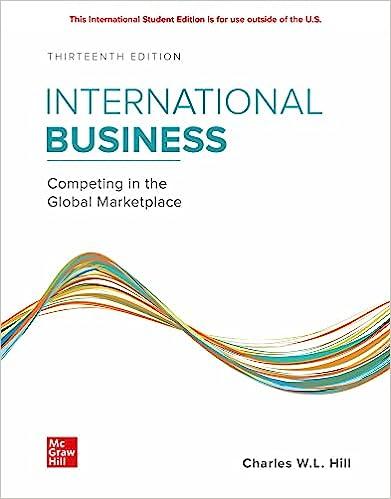Question
The Agricultural Bank of China (AgBank) was the victim of an interesting 3.8 billion yuan ($578 million) embezzlement scheme. In early 2015, China's stockmarket was
The Agricultural Bank of China (AgBank) was the victim of an interesting 3.8 billion yuan ($578 million) embezzlement scheme. In early 2015, China's stockmarket was rallying, with share prices increasing dramatically. Twoemployees of AgBank saw an opportunity to embezzle and make money
off the stock market. They replaced the AgBank's acceptance bills (a type of liability that is issued and exchanged in paper format), with newspaper clippings. They then cashed the acceptance bills at another Chinese bank, and invested the funds in the stock market, expecting to make a quick profit. They planned to cover up their embezzlement by paying back the other Chinese bank, re-obtaining the acceptance bills, and then replacing them in the vault at AgBank.
The problem was that instead of continuing to rally, the Chinese stockmarket bubble burst in the summer of 2015, leaving the fraudsters with no ability to exit their scheme in the manner in which they had intended.
Chinese banks have been plagued with accusations of corruption. For example, a former Vice President of AgBank was sentenced to life in prison in 2015 for accepting bribes. Stock markets globally aredevaluing bank stocks due to very low (or sometimes even negative)interest rates; but the situation in China is even worse because of theendemic bribery, fraud, and embezzlements that have been revealed in recent years.
The effect of the revelation of the embezzlement and the stock market pressures is evident in the following chart showing AgBank's share price:
Source: Adapted from Judgment and Choice, by Robin Hogarth.
1.Think about the fraud triangle. What was the incentive for the fraudsters in this case? What was the opportunity? Speculate on potential rationalizations that these individuals might have had as they perpetrated this fraud.
2.What implications do you draw from the stock market reaction to the AgBank embezzlement?
3.There are four state-owned commercial banks in China:
Industrial and Commercial Bank of China.
Bank of China.
China Construction Bank.
Agricultural Bank of China
These are among the largest banks in the entire world. One might expect that these banks would have very sophisticated internal controls around the physical protection of acceptance bills. PricewaterhouseCoopers (PwC) is the external auditor of AgBank. In fact, AgChina's 2015 Annual Report stated that PwChad issued an unqualified report on the company's internal controls over financial reporting. What responsibility do you think that PwC has in this case, if any?
Step by Step Solution
There are 3 Steps involved in it
Step: 1
Analyzing the Agricultural Bank of China Embezzlement Case 1 The Fraud Triangle The Fraud Triangle is a framework that helps identify the three elemen...
Get Instant Access to Expert-Tailored Solutions
See step-by-step solutions with expert insights and AI powered tools for academic success
Step: 2

Step: 3

Ace Your Homework with AI
Get the answers you need in no time with our AI-driven, step-by-step assistance
Get Started


